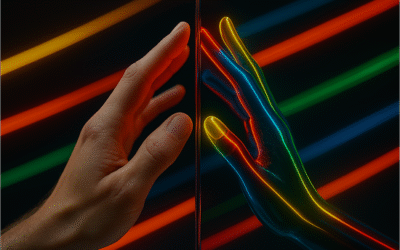As AI becomes more embedded in business operations, most conversations still frame it as a tool—a feature to automate, a bot to reply, or a widget to assist. But this framing falls short when we consider what AI can now do, especially within structured environments like operations, customer service, and internal workflows.
Enter the PTA—Pre-Trained Assistant. More than a bot, more than a virtual assistant, a PTA is designed not to act like software, but to behave like a colleague.
Rethinking AI
From Tools to Team Members
We’ve long treated AI as a layer on top of systems—chatbots to handle FAQs, RPA bots to mimic human clicks, or generative models to write content. These are undoubtedly helpful, but they often:
- Work in isolation
- Lack understanding of organizational structure
- Depend on users to adapt their processes around the tool
PTAs flip this dynamic. They are embedded inside the team, not outside of it. Each PTA is assigned a job role, a communication style, and a clear scope of responsibility—just like any new hire.
They’re not designed to replace human employees, but to collaborate with them. The goal is not full automation, but context-aware augmentation.
What Makes a PTA a “Colleague”?
Here’s how PTAs differ from traditional AI agents in meaningful ways:
Defined Roles
Each PTA is assigned a specific job function (e.g., Inventory Manager, Customer Support, Project Assistant). This role determines what data it can access, what tasks it can perform, and how it interacts with the team.
Behavioral Configuration
Unlike generic AI, PTAs come with:
-
Company DNA: Shared tone and cultural alignment across all assistants in a business
-
Employer Expectations: Task-specific instructions, customized per PTA
These behavioral layers ensure PTAs sound, act, and decide in ways that align with team norms.
Collaboration-Centric Design
PTAs don’t just respond to prompts—they participate in handoffs, relay information, and support coordination across human and digital coworkers. Especially via the Team Assistant, PTAs work in concert with others to keep tasks and conversations flowing.
ERP & System Integration
PTAs are tightly integrated with back-office systems. They don’t need manual copy-pasting or low-code setup—they directly retrieve, modify, and log structured business data as part of their work.
From Transaction to Relationship
Traditional bots are transactional: a user asks, the bot replies.
PTAs are relational: they understand responsibility, remember context, and take initiative.
For example:
-
A Customer Support PTA doesn’t just answer a question—it tracks ticket status and loops in a human if it can’t resolve the issue.
-
A Sales PTA doesn’t just log a lead—it notifies the team of high-priority entries and suggests next actions.
This shift toward relationship-aware AI redefines how we think about digital labor.
Why This Matters for the Future of Work
As companies look to scale without overwhelming their teams, the temptation is to buy more tools. But more tools often mean more complexity and more fragmentation.
PTAs offer a different approach: build a team. Not a human-only team, and not a tech-only stack—but a digital-human hybrid workforce where:
- Each PTA handles structured, repeatable tasks.
- Each human focuses on decisions, exceptions, and creativity.
- Everyone communicates through a shared environment.
This model creates a sustainable, scalable operational layer that grows with the business—not against it.
Final Thought
PTAs are not “just another AI feature.” They represent a rethinking of what it means to add intelligence to a company. By embedding AI into roles, communication, and systems, AIS turns assistants into teammates.
In doing so, businesses aren’t just automating—they’re designing a digital workforce that operates with clarity, context, and purpose.
In the age of AI, your next colleague might not be a person—
but they’ll still understand the way you work.



